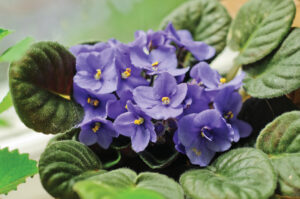It’s August, and who knows what the weather will be. June was a soggy mess, though many of the plants loved all the rain, particularly the corn, hostas and trees.
Of course, it also brought out the mosquitoes and other little biting creatures. That’s why it’s always important to make sure gutters drain, plant saucers and watering cans are emptied of standing water, and fill in low lying yard areas.
Lawns looked lush the first of June and were yellowing toward the end as rains leached much of the nitrogen turf needs to remain green. Fortunately in another month, it’ll be time to fertilize again as we prepare for autumn.
Since this was written a month ago, I have no idea what July brought. It could have been hot and dry, cool and moist or somewhere in between. Warm, low dew points and weekday evening rains would be ideal. If I could do predictions, I’d rather opt for the lottery numbers for a retirement account.
We can’t do much about the weather except complain that we can’t do much about the weather.
Too much rain causes many garden-related problems, some we can manage while others are keep-your-fingers-crossed types.
The aforementioned leaching of nitrogen is one of the biggest, especially for gardeners who are now wondering why certain plants in the vegetable and flower garden aren’t growing as much as they should. Plants look yellowed and leaves are smaller when nitrogen isn’t around. Stunting is common, though you might think the plants might be just a new dwarf type. Make sure you find the tags to rule that out.
Of course, a stressed plant is more susceptible to diseases. Complicating the matter, most fungal and bacterial diseases love water. When the ground and foliage is constantly wet, the diseases think they are in hog heaven. Root rots increase. Stem rots and leaf blights increase.
Examples include black spot on roses, scab on apples and crabapples, most tomato foliar diseases, and phytoptera root rot on rhododendrons. The last one is particularly interesting. As the root rots the leaves start rolling and looking like they’re wilting. And of course, what do we do when something looks like it is wilting? Yep, water it some more.
Fortunately, powdery mildew hates so-called free water. It likes dry conditions with high humidity.
Excess rain also depletes the soil of oxygen as even the large soil pores are filled with water. Most roots need as much oxygen as the leaves. Without it, they start dying, increasing the rots.
So if the roots sense the soil is saturated, they head toward the surface. At least they can breathe.
But the problem is they need to be down deep so they can anchor the plant. That’s what the bracer

roots are for on corn, but they don’t form if rain is abundant. Come fall as the stalks are drying, farmers pray for no wind. Otherwise, the corn will be flat. The same thing could happen with tomatoes and 2015-planted trees.
Of course, if it gets hot and dry in July and August, then plants wilt quickly since they don’t have roots down deep in the cooler and moister soil.
On the other hand, I bet most of us would rather fight with too much water than have to experience California’s drought and associated problems. But maybe not.










